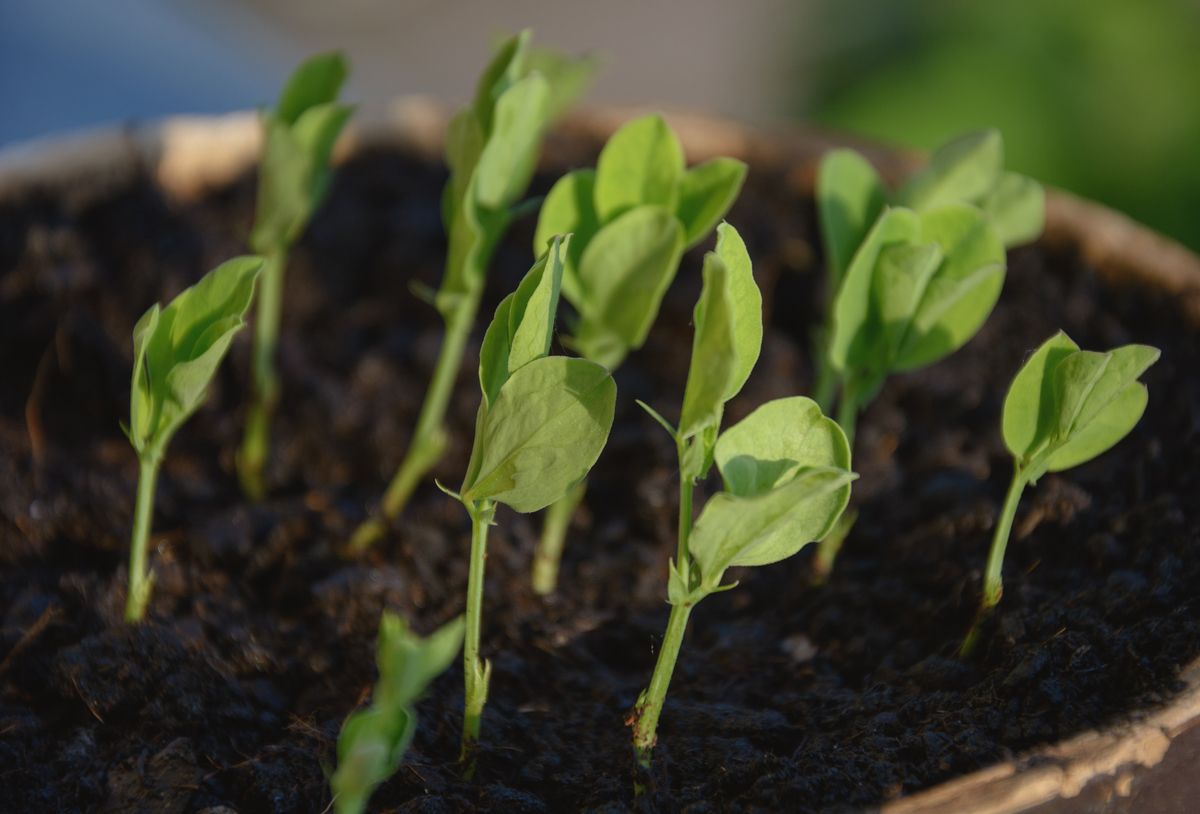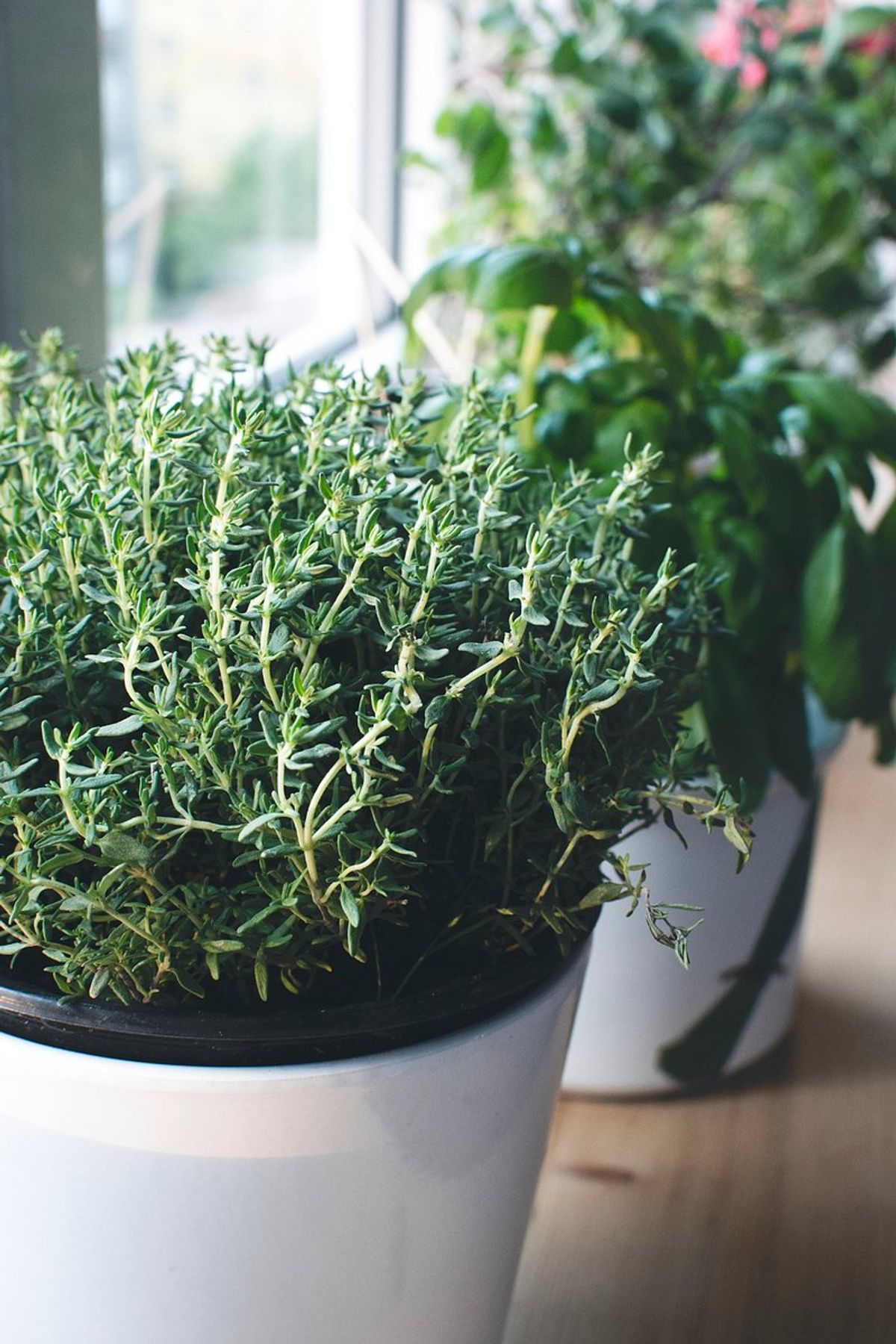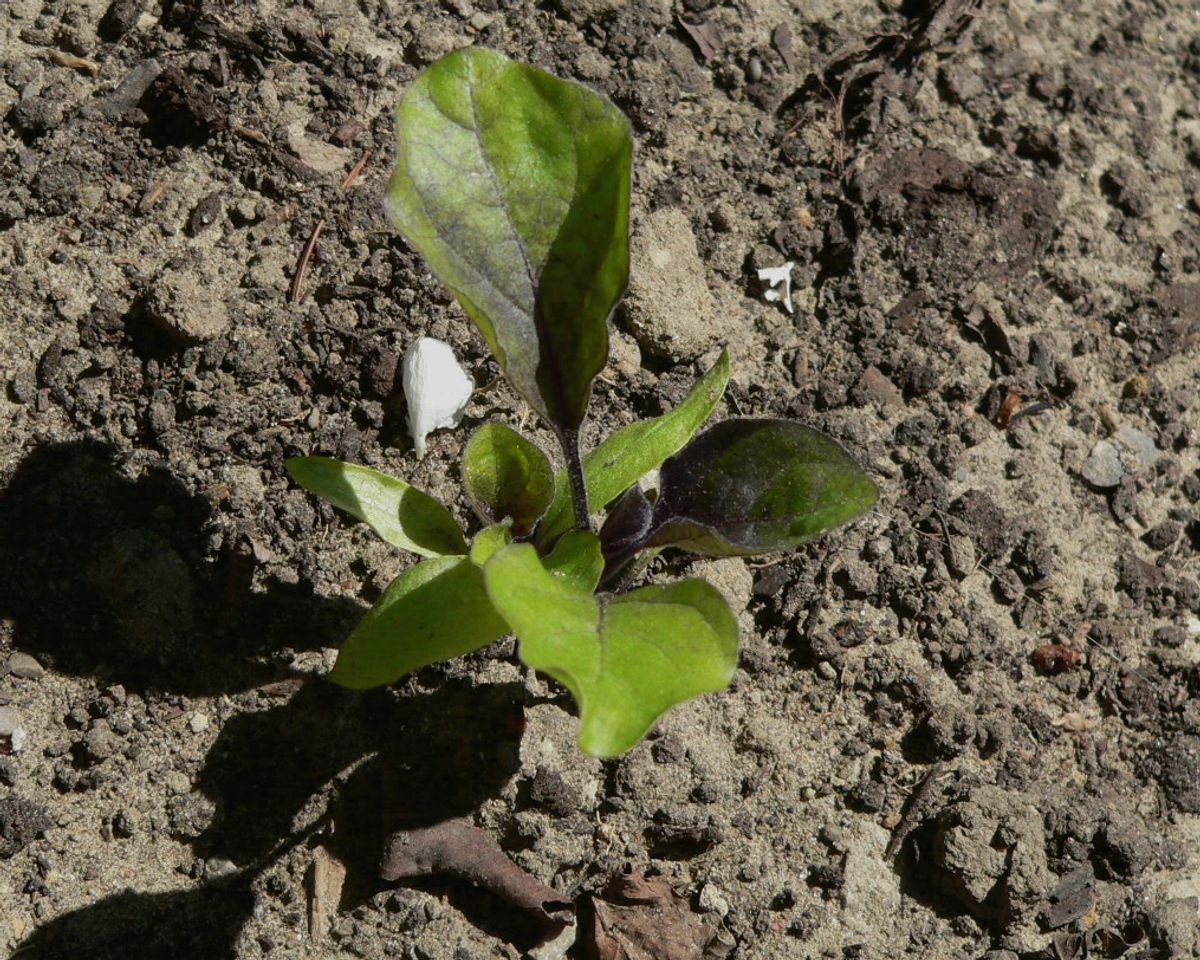Eggplants, with their rich flavor and versatility, are a rewarding addition to any garden. This article provides a comprehensive guide on growing eggplants, from the initial selection of seeds to the joy of harvesting.
By understanding the growth stages and employing the right techniques, gardeners can ensure a bountiful yield of this popular vegetable. Let’s explore the key steps and best practices for cultivating eggplants successfully, from seed to plate.
Table of Contents
Key Takeaways
- Start with selecting the right eggplant variety for your growing zone and opt for disease-resistant seeds to ensure a strong start.
- Prepare the soil with proper pH adjustments and organic amendments to create an ideal environment for eggplant growth.
- Carefully manage the watering, mulching, and nutrient supply to nurture seedlings and support their development through each growth stage.
- Monitor the eggplants closely for signs of pests and diseases, and adjust care practices as the plants move through different growth milestones.
- Harvest eggplants at the right time using proper techniques and handle post-harvest with care to maintain freshness and quality.
Selecting and Germinating Eggplant Seeds

Determine The Ideal Growing Zone
Before planting your eggplant seeds, it’s essential to determine the ideal growing zone for your area. Eggplants are heat-loving plants and require a long growing season to flourish. Utilizing resources like the USDA Plant Hardiness Zone Map can guide you in choosing the right varieties that will thrive in your local climate.
The map, updated with the latest data, is an interactive tool that helps gardeners understand which plants are most likely to succeed in their location.
Here’s a simple list to help you identify your growing zone:
- Refer to the Plant Hardiness Zone Map.
- Locate your area on the map.
- Note the color-coded zone number.
- Select eggplant varieties recommended for your zone.
Remember, selecting the correct zone is crucial for the health and productivity of your eggplants. It ensures that the plants are compatible with the temperature and length of the growing season in your region.
Select Disease-resistant Varieties
Choosing the right variety of eggplant seeds is crucial for a successful harvest. Select disease-resistant varieties to mitigate the risk of common ailments such as verticillium and bacterial wilt. These varieties are specifically bred to withstand certain diseases, ensuring a more robust crop.
For example, the Pingtung Long variety from the Alliance of Native Seedkeepers is known for its slender 15-inch fruits with a dark and lavender color. It is not only disease-resistant but also early maturing, making it a versatile choice for gardeners.
In addition to selecting resistant varieties, implement preventative measures to protect your eggplants:
- Rotate crops with non-solanaceous plants to avoid disease build-up in the soil.
- Maintain cleanliness in the growing area to prevent disease spread.
- Water appropriately to avoid waterlogged conditions that can foster diseases.
By integrating these practices with the choice of resistant varieties, you can significantly reduce the incidence of disease and ensure a bountiful eggplant harvest.
Sow Seeds In Seed Trays Or Pots
Starting your eggplant journey begins with the sowing process. Fill your trays or pots with a sterile potting mix, which can be a homemade blend of cocopeat, vermicompost, and perlite, or a commercial seed starting mix. Ensure the mix is lightly moistened before sowing.
- Sow the seeds approximately 0.5 cm deep into the mix.
- Gently cover the seeds with a thin layer of the mix and press down lightly.
- Keep the trays in a shaded, well-ventilated area with temperatures between 25-30°C and humidity around 70-80%.
Consistent watering is crucial; use a mist or drip irrigation system to maintain soil moisture without overwatering. A weekly application of diluted seaweed extract or humic acid can promote healthy seedling growth.
Remember, germination typically occurs within 5-7 days, and seedlings are ready for transplanting in about 25-30 days. Monitor your seedlings regularly for any signs of pests or diseases to ensure they grow into healthy, robust plants.
Provide Proper Lighting And Temperature
Eggplants thrive when given the right conditions for germination and growth. Proper lighting is essential; seed trays or pots should be placed in a location that receives at least 12 hours of direct sunlight. If natural light is insufficient, especially for indoor setups, consider using fluorescent or LED grow lights, positioned about 2-3 inches above the seedlings to prevent them from becoming leggy.
Maintaining the right temperature is equally important for white eggplant seeds, which generally prefer a warm environment. Aim for temperatures around 70-85 degrees Fahrenheit. In cooler conditions, a seedling heat mat can provide consistent warmth and help expedite the germination process.
Eggplants require consistent environmental conditions to ensure healthy development. This includes managing both light and temperature to mimic the plant’s natural habitat as closely as possible.
For optimal growth, it’s also crucial to maintain proper air circulation and humidity levels. Here’s a quick guide to help you set up the ideal environment:
- Daytime polyhouse temperature: 25-30°C
- Nighttime polyhouse temperature: 18-22°C
- Relative humidity: 60-70%
- Light intensity in polyhouses: 5000-7000 lux
Adjust these settings using climate control tools such as fans, heaters, shade nets, and artificial lights as needed.
Soil Preparation and Planting for Growing Eggplant

Test Soil pH And Adjust If Necessary
Eggplants prefer a specific soil pH to flourish. Test the soil pH using a kit and aim for a slightly acidic range of 6.0 to 7.0, which is ideal for eggplant growth. If the pH is not within this range, it’s crucial to make adjustments. You can use materials like dolomite to increase the pH or sulfur to decrease it.
Italics are used for emphasis.
Here’s a simple guide to adjusting soil pH:
- For pH below 6.0: Add dolomite or lime to raise the pH.
- For pH above 7.0: Apply sulfur or aluminum sulfate to lower the pH.
Ensuring the correct soil pH is vital for the absorption of nutrients and overall health of your eggplants.
Remember, the goal is to create a conducive environment for the eggplants, which includes a soil rich in organic matter. Incorporate compost or well-rotted manure to improve soil fertility and structure, thus promoting robust eggplant growth.
Amend The Soil With Organic Matter
Once the soil pH is at an optimal level, the next crucial step is to amend the soil with organic matter. This practice is essential for creating a well-drained soil that is conducive to the growth of eggplants. Incorporating materials such as compost, well-rotted manure, or leaf mould can significantly improve soil structure, enhance water retention, and supply vital nutrients.
Organic matter is not just about adding nutrients; it also plays a pivotal role in fostering a thriving ecosystem beneath the soil surface. The addition of organic materials encourages the presence of beneficial microbes, which in turn helps in creating a healthy environment for eggplants to flourish.
To avoid the pitfalls of waterlogging, which can be detrimental to the plants, ensure that the soil has good drainage. This may involve raising beds or incorporating organic matter in areas with heavy or poorly draining soils.
Here are some key points to remember when amending your soil:
- Use well-decomposed organic matter to avoid introducing pathogens.
- Mix the organic matter thoroughly with the existing soil.
- Avoid using fresh manure as it can burn the roots of young plants.
- Monitor the soil’s moisture level after amendment to ensure it’s not too wet or dry.
Choose The Optimal Transplanting Time
Choosing the right time to transplant eggplant seedlings is a pivotal step in your gardening journey. Transplant seedlings when daytime temperatures consistently stay above 60\u00b0F (15\u00b0C), ensuring that all danger of frost has passed. This period is often a few weeks after the last frost date, allowing the soil to warm up and create a conducive environment for the seedlings.
Before the actual transplanting, it’s essential to harden off the seedlings. This process involves gradually exposing the plants to outdoor conditions to prevent transplant shock. Here’s a simple guide to follow:
- Begin hardening off 7-10 days before transplanting.
- Initially, place seedlings outdoors in a shaded area for a few hours each day.
- Gradually increase their exposure to sunlight and outdoor temperatures.
- Reduce watering slightly to help them adjust to less frequent irrigation post-transplant.
Remember, patience is key. Rushing this stage can lead to setbacks, so monitor the weather and seedling progress closely.
Once your seedlings are acclimated and the conditions are right, follow these steps for a successful transplant:
- Prepare the beds well in advance to allow for soil settling.
- Ensure the soil is moist by watering the beds thoroughly before transplanting.
- Use a rope or stick to mark out rows and columns on the bed, adhering to the recommended plant spacing.
- If using plastic mulch, secure it with pegs and create holes for the seedlings.
- Arrange the beds to maximize sunlight exposure and air circulation, which is crucial for the growth of eggplants.
Harden Off Seedlings Before Transplanting
Before introducing your eggplant seedlings to their final growing location, it’s essential to harden them off. This process involves gradually exposing the plants to outdoor conditions over a period of 7-10 days. Begin by placing the seedlings outside in a shaded, protected area for a few hours each day, slowly increasing their exposure to sunlight and outdoor temperatures.
- Start with 2-3 hours of outdoor exposure
- Gradually increase sunlight exposure
- Extend the duration by 1-2 hours daily
By acclimating your seedlings to the elements, you’re helping to prevent transplant shock, which can significantly impact their development and yield. Remember, the goal is to give your plants a strong and healthy start, ensuring they can withstand the changes in their new environment.
Hardening off is a critical step in the transplanting process. It conditions the seedlings to withstand the stress of moving from a controlled environment to the variable conditions of the outdoors.
Following this guide will help your eggplant seedlings transition smoothly and set them up for success in your spring garden.
Caring for Eggplant Seedlings

Watering And Mulching
Proper watering is crucial for the healthy growth of eggplant plants. Consistent moisture is key, but be wary of overwatering, as excessively wet soil can lead to root rot and disease. To check if your plants need water, simply assess the soil’s moisture level.
To maintain the ideal moisture balance, consider mulching around the base of the plants. Mulch acts as a natural barrier against evaporation, preventing water loss and maintaining a stable root temperature. Organic mulch, such as straw or compost, not only conserves water but also enriches the soil as it decomposes.
Always use a Mulch Cover, even in very hot climates. If temperatures exceed 85° F, place the cover with the white side up to reflect the sun and prevent heat stress on small plants.
Remember, the Mulch Cover is essential for protecting the growing environment. It helps conserve water, prevents nutrient washout during heavy rains, and shields the soil from weeds and pests. Here’s a simple guide for using mulch effectively:
- Use organic mulches like straw or compost for added soil nutrition.
- Apply a 2 to 3-inch layer around the base of the plant, avoiding direct contact with the stems.
- In hot climates, use the white side of the Mulch Cover to reflect sunlight.
- Replenish mulch as needed throughout the growing season to maintain its benefits.
Monitoring For Pests And Diseases
Eggplants are susceptible to a variety of pests and diseases that can significantly impact plant health and yield. Regular monitoring is essential to detect issues early and implement control measures. Common pests include aphids, flea beetles, spider mites, and whiteflies, which can cause stunted growth and reduced yields.
Implementing preventive measures and addressing pest and disease issues promptly is crucial for safeguarding the fruits from damage.
Organic and chemical strategies can be employed to manage these challenges effectively. Here’s a list of common pests and diseases to watch for:
- Pests: Aphids, thrips, whiteflies, leafminers, spider mites, mealybugs, fruit borers, shoot borers, root-knot nematodes.
- Diseases: Damping-off, wilt, blight, leaf spot, mosaic virus, bacterial wilt, anthracnose.
Preventative measures for diseases are vital. These include crop rotation, using disease-free seeds, proper spacing to improve air circulation, and avoiding overhead watering to reduce leaf wetness. Timely intervention can prevent the spread of pests and diseases, ensuring a healthy crop.
Providing Adequate Sunlight And Nutrients
Eggplant seedlings thrive with ample sunlight and the right balance of nutrients. Ensure your seedlings receive 6-8 hours of direct sunlight daily to promote strong and healthy growth. If growing indoors, provide the seedlings with an overhead light to mimic natural conditions.
When it comes to nutrients, a balanced fertilizer is key. Use a fertilizer with an equal ratio of nitrogen, phosphorus, and potassium to support all stages of growth. Here’s a simple guide for fertilization:
- At planting: Mix a balanced fertilizer into the soil.
- During growth: Apply a half-strength liquid fertilizer every two weeks.
- Flowering and fruiting: Switch to a low-nitrogen, high-potassium fertilizer.
Adequate sunlight and proper fertilization are crucial for the development of eggplants. They ensure not only the growth of the plant but also the quality and taste of the fruit.
Remember to adjust watering and nutrient levels based on the specific needs of your eggplant variety. Overwatering can lead to root rot, while insufficient water and nutrients can stunt growth and reduce yield. Regularly check the soil moisture and adjust your watering schedule to maintain optimal conditions for your eggplants.
Navigating the Growth Stages of Eggplants

Understanding The Seedling Development Phase
After the initial germination period, eggplant seedlings enter a critical development phase. Roots are still small and developing, and the plants may not consume much water. However, as leaves begin to emerge and the plant grows taller, the demand for water and nutrients increases significantly.
During this vegetative growth stage, leaf and stem development accelerates. A healthy leaf canopy is crucial for photosynthesis, which fuels the plant’s growth. To support this, ensure your eggplants receive ample sunlight and are planted in nutrient-rich soil. Trellising may be necessary to support the plant as it grows.
Careful monitoring and adjustments to care are essential during this phase to set the foundation for a bountiful harvest.
Here are some tips for nurturing eggplant seedlings:
- Use a sterile potting mix to prevent disease.
- Keep the soil lightly moistened and the environment well-ventilated.
- Water the seedlings thoroughly after transplanting to settle the soil.
- Apply a diluted seaweed extract or humic acid weekly to promote healthy growth.
Managing Flowering And Fruit Development
During the flowering stage, eggplants enter a critical phase of their growth cycle. It’s at this point that the potential for fruit sets in, marking a significant milestone in the plant’s life. To ensure successful fruit development, it’s essential to maintain consistent care.
Eggplant flowers are delicate and can be prone to dropping without setting fruit. This can be due to a variety of reasons, including temperature fluctuations, inadequate pollination, or nutrient imbalances. To combat this, gardeners can gently tap on the plants to help spread the pollen, aiding in the pollination process.
Consistent monitoring and adjustment of care practices are key to managing the flowering and fruit development stages effectively.
Here are some essential practices for managing fruit growth effectively:
- Regular watering to maintain soil moisture without waterlogging
- Providing balanced fertilization to support fruit formation
- Implementing trellising techniques to support the growing stems
- Pruning to encourage air circulation and reduce disease risk
- Monitoring for pests and diseases and taking prompt action if needed
Adjusting Care Throughout The Growth Milestones
As your eggplants progress through their growth milestones, it’s crucial to adjust your care regimen to meet their changing needs. Regular monitoring and adjustments are key to ensuring a bountiful harvest. During the vegetative stage, focus on stem growth and consider trellising to support the plant’s structure and promote air circulation.
As the plants enter the flowering stage, they require more phosphorus to encourage bloom and fruit set. Adjust your fertilization accordingly to provide the necessary nutrients.
When managing fruit growth, full sun exposure is essential for facilitating proper photosynthesis and fruit development. Eggplants typically need 8 to 10 hours of sunlight daily. Here are some essential practices for managing fruit growth effectively:
- Ensure consistent watering to avoid stress and blossom end rot.
- Monitor for pests and diseases regularly to take prompt action.
- Adjust fertilization to support fruit development, with a higher potassium content.
By staying informed about these growth stages, you can confidently nurture your eggplants from seed to plate.
Harvesting and Post-Harvest Handling

Determining The Right Time To Harvest
Knowing the right time to harvest eggplants is essential for achieving the best flavor and texture. Look for glossy skin and a firm texture as indicators of peak ripeness. Eggplants should be heavy for their size, and the seeds inside should be barely visible when sliced open.
Size and color are also important maturity indicators. Here’s a quick guide to help you identify when your eggplants are ready:
- Small varieties: Harvest when they are about the size of a large egg.
- Standard varieties: Pick when they are 4 to 5 inches in diameter.
- Large varieties: Wait until they are 6 to 7 inches long.
Consistent checking is key. Harvest eggplants as soon as they reach maturity to encourage further fruiting.
Remember, eggplants do not ripen significantly after being picked, so timing is crucial. Harvesting too early can lead to underdeveloped flavor, while waiting too long can result in a bitter taste and tough skin.
Proper Techniques For Picking Eggplants
Harvesting eggplants at the right stage of ripeness is crucial for the best quality and flavor. Use clean, sharp pruners or shears to cut the eggplant from the stem, ensuring a small section of the stem remains attached. This method prevents damage to the plant and the fruit.
Timing is essential; pick eggplants while they are young and tender to avoid bitterness. Most varieties are ready to harvest 65 to 80 days after planting. A simple test for ripeness is the bounce back test: gently squeeze the eggplant and observe if the skin springs back. If it does, the eggplant is ripe for picking.
After harvesting, clean the eggplants to remove any dirt or debris. This step is vital for preventing disease spread and ensuring safety for consumption.
Store your harvested eggplants in a cool, dry place. Proper storage is key to preventing spoilage and maintaining freshness and flavor.
Storing And Preserving Eggplants For Freshness
After the eggplants have been harvested and cleaned, proper storage is crucial to maintain their freshness. To store eggplant in the fridge, place it in a perforated plastic bag in the crisper drawer. It’s important to avoid washing the eggplants before storing to prevent moisture buildup, which can lead to spoilage.
Eggplants should be stored in a cool, dry place to prolong their shelf life and retain their flavor.
For those looking to keep eggplants at their best for longer periods, consider these additional tips:
- Use clean, sharp pruners or shears to cut the eggplant from the stem, leaving a short section of the stem attached.
- Harvest your eggplants when they are still young and tender to avoid bitterness.
- Regularly check stored eggplants for signs of spoilage and use them promptly to ensure the best quality and taste.
Cultivating Zucchini: Tips for a Successful and Abundant Harvest
Step-by-Step to Growing Bell Peppers in Your Garden
Mastering the Art of Growing Carrots: Tips for a Bountiful Harvest


